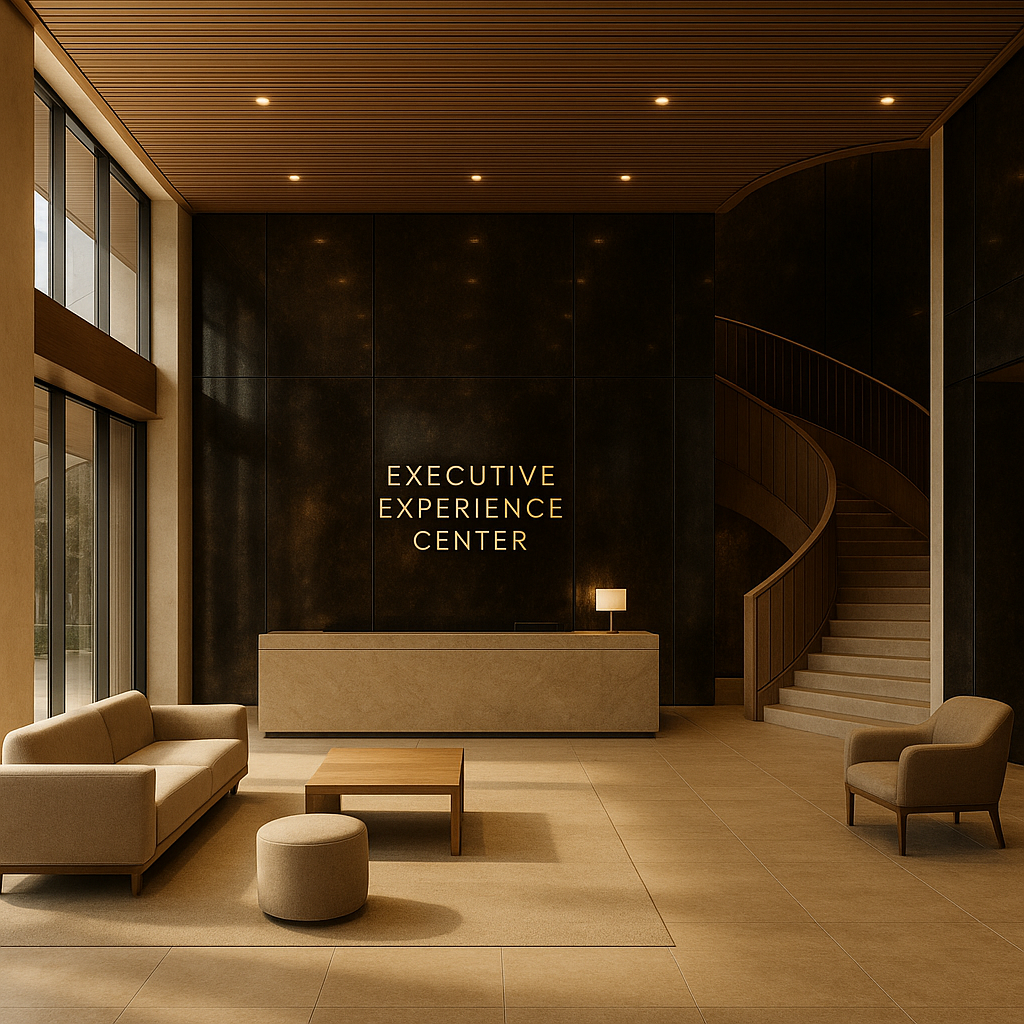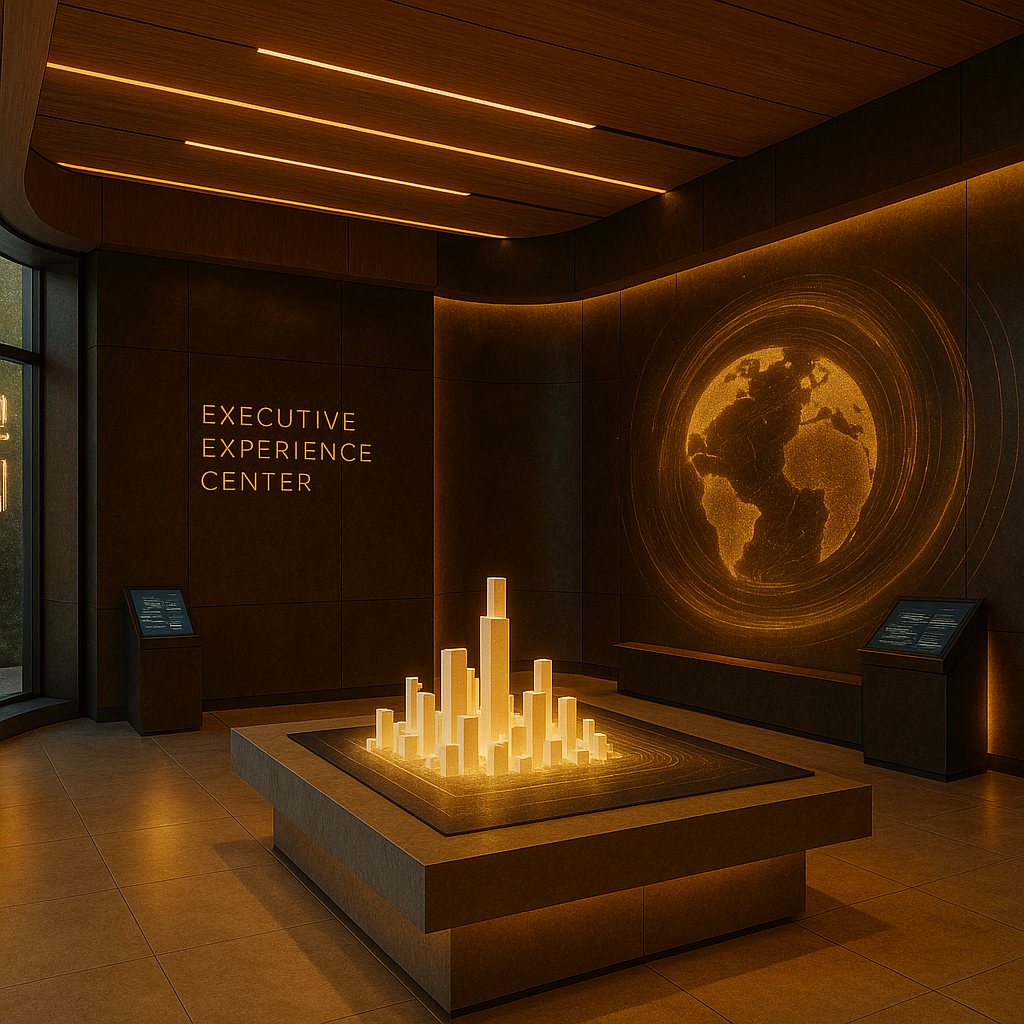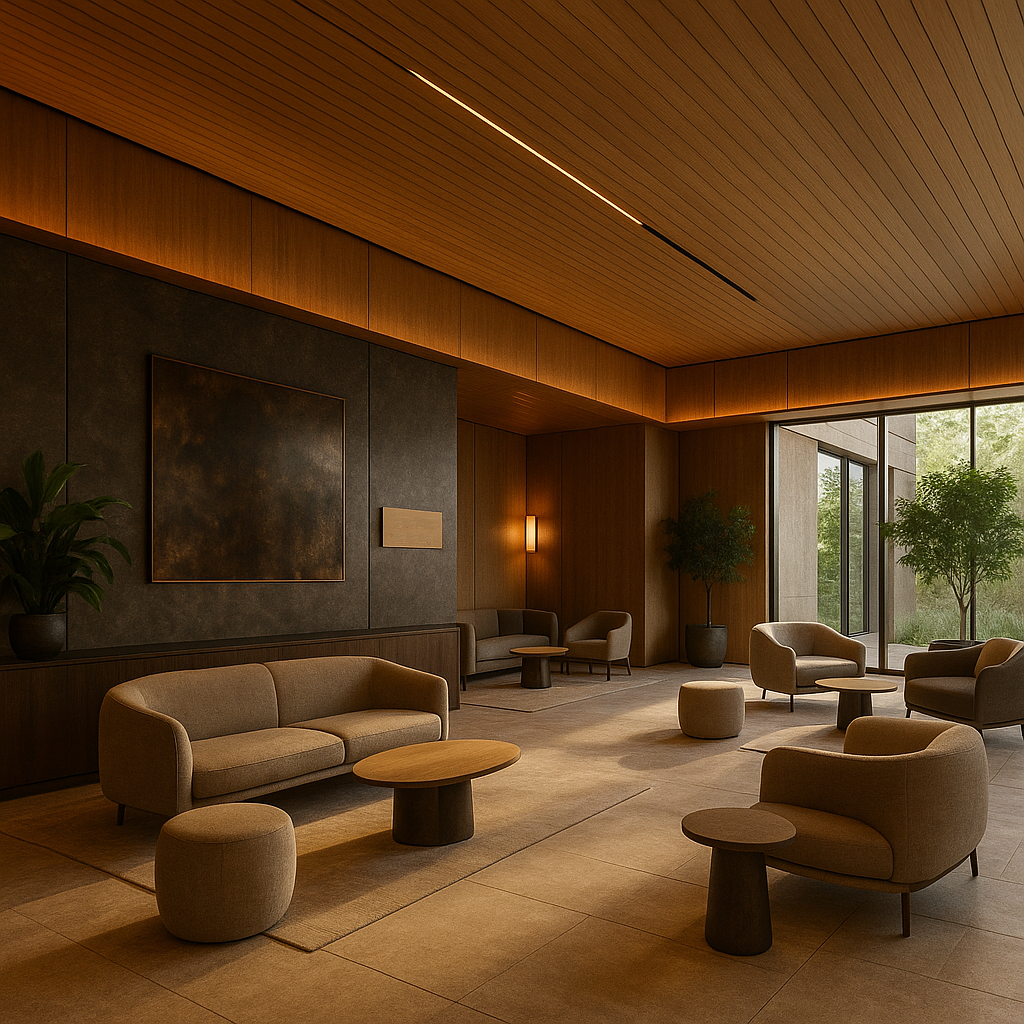Google Partner Plex — APAC Expansion
Focus Areas
- Cross-functional alignment
- Stakeholder management
- Schedule planning
- Vendor onboarding
- Design–build framework
- International collaboration

Overview
The APAC Partner Plex was a proposed addition to Google's global network of executive experience centers. Designed for a major Asia-Pacific market, the center was intended to host enterprise partners, diplomatic delegations, and regional leadership while delivering a premium, culturally attuned visitor experience.
The project advanced through full design completion before being paused due to global prioritization changes. As the project manager, I coordinated the end-to-end delivery of the design phase, aligning internal teams, external partners, and regional stakeholders across two continents.
My Contribution
Project Management & Cross-Functional Leadership
Created and managed the design process that aligned global teams. Ran daily US–APAC syncs with structured agendas so design, engineering, and interactive partners always knew priorities, blockers, and ownership.
Reduced risk by standardizing and managing vendor onboarding. Developed scopes of work through pre-contract alignment workshops where we defined deliverables, timelines, dependencies, and handoffs. Adjusted partner workflows to meet Google's standards before contracts were signed.
Streamlined communication for stakeholders. Summarized updates into clear, concise briefings so executives and operational partners could make decisions quickly and confidently.
Translated stakeholder feedback into actionable, prioritized workflows for our architects, vendors, and consultants, ensuring sequencing and expectations were clear.
Turned leadership direction into workable plans. Took executive input and structured it into focused tasks and handoffs that supported cross-functional momentum.
Protected schedule integrity. Created guardrails around when feedback was invited, when approvals were final, and what was considered locked, preventing rework as design approached completion.
Systems & Process Development
Created a repeatable design–build framework for future centers
Developed a standardized delivery model Google could apply to future Partner Plex and experiential projects worldwide.
Templatized contracts, workflows, communication structures, and schedules to improve clarity for architecture partners, consultants, and interactive vendors.
Creative–Technical Alignment
Led early "room-by-room" design intent workshops
Designed collaborative sessions where Experience Studio Design Leads and Technical Integration partners broke down each space in detail:
- Show moments
- Environmental media
- Lighting and motion sequences
- Interactive behaviors
- Custom programming requirements
- Technical constraints
Integrated requirements for AI-driven and generative interactive experiences, outlining data flow, rendering expectations, and real-time behavior logic.
These early workshops produced a technical playbook that reduced ambiguity and accelerated future installation and commissioning.
Design Intent Coordination
Ensured design direction was documented accurately and circulated consistently across engineering, interactives, architecture, and vendor partners.
Managed redline distribution, file organization, and iterative review cycles across two continents.
Flagged conflicts between design, technical constraints, and operational realities before they became schedule risks.




What Decisions I Made
- Prioritized design and engineering deliverables based on cross-team dependencies and technical sequencing.
- Determined when to escalate scope conflicts or misalignment across internal and external partners.
- Unified conflicting interpretations between US and APAC teams through structured alignment sessions.
- Refined documentation flows and meeting rhythms to prevent design drift caused by asynchronous workflows.
What Problems I Solved
- Kept the project aligned to an ambitious executive mandate: one year for design and one year for build preparation, rare for a custom experiential center.
- Prevented scope creep by establishing clear boundaries around decision-making, approval cycles, and locked deliverables.
- Worked with architecture, design, and vendor partners to prioritize critical path work, re-sequence efforts, and maintain momentum.
- Ensured creative, technical, and operational teams understood sequencing dependencies, preventing costly late-stage changes.
- Addressed cultural and regional alignment issues early so the final experience felt cohesive and appropriate for the region.
My Hero Moment
One of the biggest challenges in APAC was the executive mandate to complete design in under one year and prepare the center for an equally compressed build phase. I established a governance model that clarified when stakeholders could give input, what counted as final approval, and which decisions were locked.
These guardrails prevented late-stage rework and kept partners aligned across two continents. By protecting the schedule and structuring decision-making, the project was able to reach design-complete on time despite its complexity.
What This Project Taught Me
This project showed me the value of building systems that create speed and predictability. Managing a global experiential center under a one-year design mandate required more than day-to-day coordination; it required program-level structure.
I learned how to create governance models that reduce risk, standardize decision-making, and keep executive feedback aligned with schedule realities. I also saw how breaking down silos between creative and technical teams—especially for AI-driven, generative interactive experiences—eliminates downstream friction.
The biggest lesson was this: scalable processes make creative work more effective, not less. When a team knows the rules, the boundaries, and the handoffs, they move faster, collaborate better, and deliver a higher-quality experience.